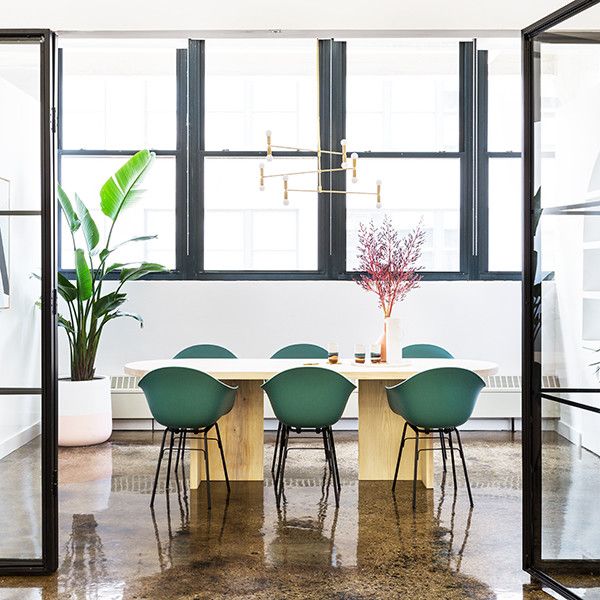No person, business, industry, philanthropic organization, or institution has escaped the burdens and pain of Covid-19, and while it feels like a lifetime already, its impact has only begun to reveal itself.
The challenges facing this country – and the world – as we move towards reopening will be different for every business, and the path forward is still unclear. Some industries have been highly proactive in stepping outside their own community to engage both government and the public in supporting their unique needs: the restaurant industry, for example, has hosted virtual town halls with legislators across the country, assembled task forces in different states to facilitate reopening, and created a multitude of funds for their furloughed and unemployed workers, with public service announcements across the media urging contributions. They have successfully re-defined “ordering in” as an act of unparalleled patriotism.
The challenges facing the fashion industry are as far reaching, and even more complex than many other industries – Spring 2020 was a wash, and with manufacturing shut down, the fall season will probably not exist. But while various assistance funds have been set up, sufficient state and federal resources have not yet been provided, nor is a global plan in place for how reopening the fashion industry will occur.
As the months go on, the industry must scramble to reduce overhead drastically, even beyond reducing staff. With businesses shut down and showroom and retail operations shuttered, it becomes increasingly more difficult to pay rent for an empty space. It is tempting to simply stop paying rent. That, however, is a bad idea.
While state governments have struggled with solutions to the problem of rent, and calls for rent relief are getting increasingly angrier, legislators continue to resist these calls, with an eye to the domino impact of a rent reprieve on owners. New York, for example, prohibits landlords from pursuing evictions for those who fail to pay the rent, but has not offered any other solutions, to date.
In the absence of legislative relief, tenants must act on their own. First step, small (and not-so-small) businesses who have not already applied for low interest loans under the Paycheck Protection Plan (which may be converted to grants), should keep an eye out for when the next round of funding becomes available. Second, instead of simply not paying rent, call your landlord and open a dialogue. Then call your real estate attorney to explore your options under your lease agreement. Most importantly, if there are any personal guaranties of the lease, you will need to assess the exposure of the individual Guarantor.
Together with your attorney, determine what your needs will be going forward and have first and second choice plans to offer the landlord. Consider issues like: will you be able to re-start your business upon reopening of the economy? This is a hard analysis and may need consultation with your accountant and investors, if any. If not, and there is a personal guaranty, you will want to act quickly. Your lease may have a provision that allows you to terminate if the building is closed or you are unable to operate in the premises in excess of thirty (30) days or in the event of force majeure. While these termination clauses have become increasingly rare, you may be lucky, and it may be time to exercise them.
Next, you will want to assess what your future business operations will look like. Will you be reducing staff and needing less space? Will you need to reconfigure your space to provide for social distancing? If so, what limitations on alterations exist under your Lease? Will the building be able to adapt elevators and common areas for any required social distancing measures? This analysis will be necessary on a practical basis, but a written plan may also be required as a condition to reopening your business by state and local government.
Another area for review is your insurance coverage. Do you have renters/business interruption insurance? You may want to determine if it extends to losses from a pandemic.
After you have determined what your needs are, including your ability to continue paying rent, you or your attorney should propose your plan to your landlord. Landlords will be loathe to renegotiate rent for tenants that have leases with rents at the top of the market, but no landlord wants empty space if they can work with a tenant to keep them in their buildings.
Each settlement will be different, but some financial plans to consider (beyond total rent relief for one to three months) are: reduced rent for a finite period, repaid commencing in 12-18 months over a multi-year period; reducing space if other tenants in the building need more space or the lease is under market, making the space attractive to the landlord; and more liberal sublet rights/subdividing the space.
While landlords are prepared to receive calls from tenants for rent relief, few landlords have fully thought through the implications for the fashion industry of losing one to two seasons. Make sure your attorney or any tenant’s representative who is negotiating on your behalf is able to express your specific losses and challenges clearly. With patience and focused expression of your needs, and a compromise Plan B, you should be able to reach a reasonably satisfactory agreement with your landlord prior to reopening, in a manner that will ease the burdens on your operations.



